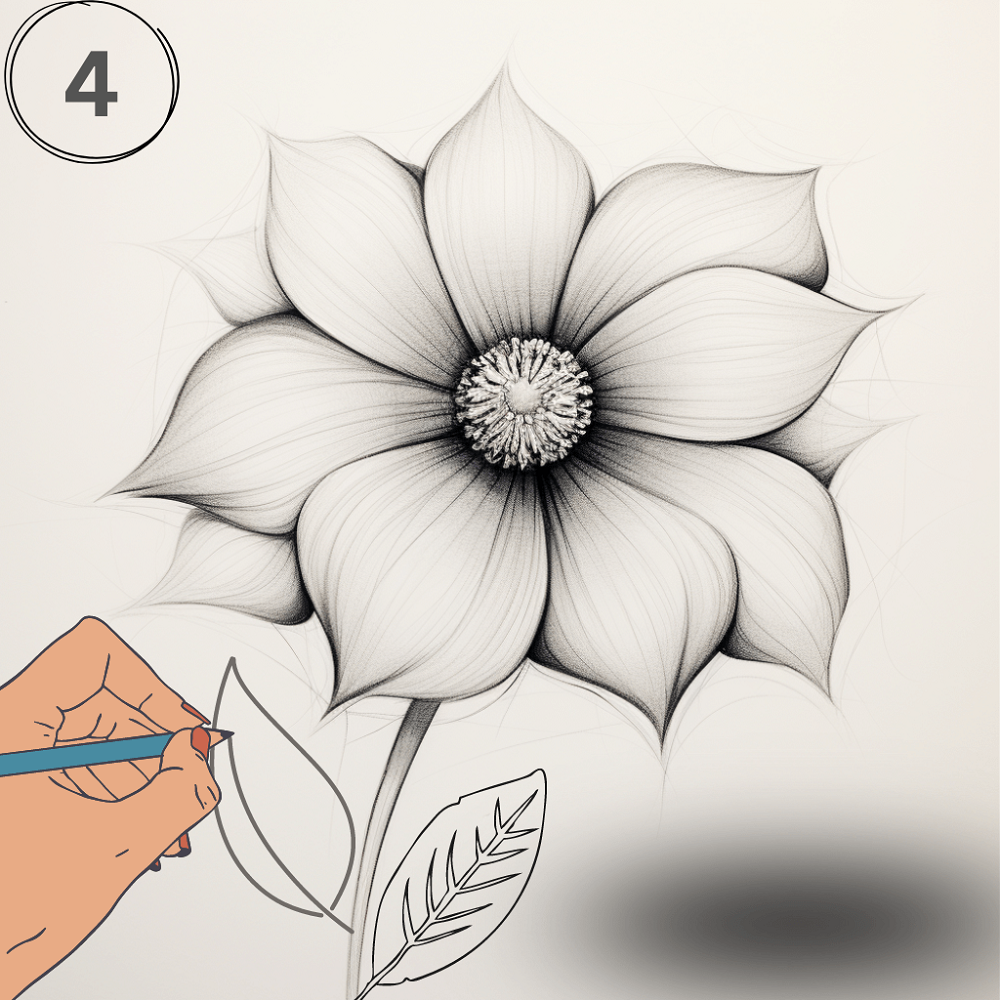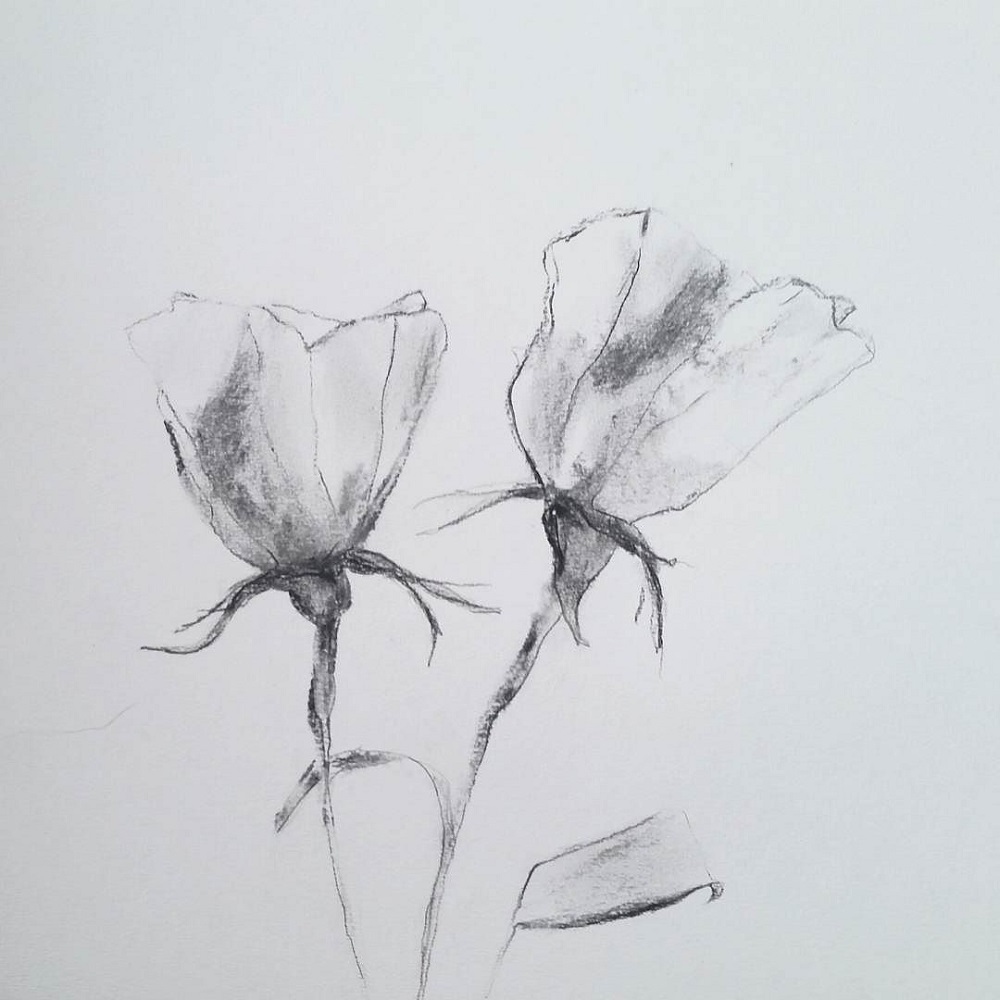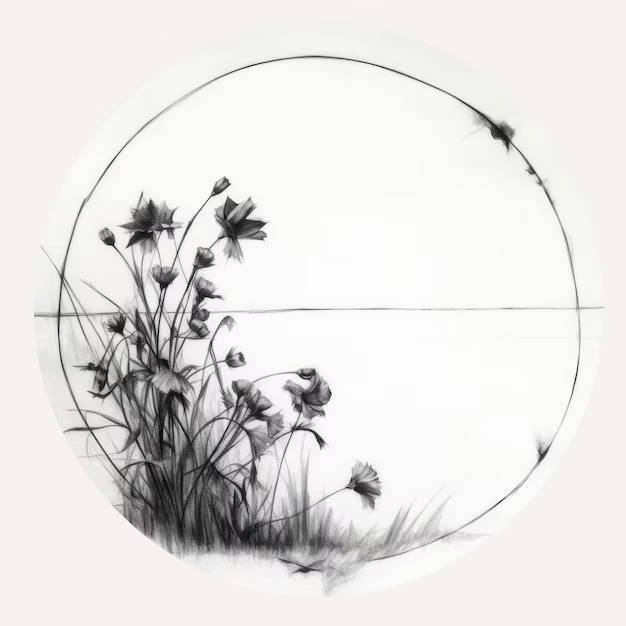Charcoal drawing offers an expressive and dynamic way to create art. It’s a medium that can produce striking contrasts and intricate details, perfect for charcoal flower drawing easy. If you’re new to charcoal and eager to start, this guide will help you master the basics of drawing flowers. We’ll cover everything from the materials you need to easy techniques to get you started.
Getting Started with Materials
Before diving into techniques, it’s essential to gather the right materials. The quality and types of materials you use can significantly impact your drawing experience and outcomes.
Choosing the Right Charcoal
Charcoal comes in several forms, each with its unique characteristics. For beginners, stick to compressed charcoal sticks and charcoal pencils. Compressed charcoal provides deep, rich blacks, perfect for bold lines and shading. Charcoal pencils offer a bit more control and are great for fine details.
Willow or vine charcoal is also useful for initial sketches. It’s softer and easier to erase, making it ideal for laying down basic shapes and outlines. Explore different brands and types to find what feels comfortable and suits your style.
Essential Tools
In addition to charcoal, a few other tools are essential. You’ll need a good-quality sketchbook or drawing paper with a bit of texture to hold the charcoal. Kneaded erasers are excellent for lifting charcoal without damaging the paper. A blending stump or tortillon helps to blend and soften edges.
Fixative spray is helpful to set your drawing and prevent smudging. Use it lightly and in a well-ventilated area. Have a pencil sharpener and a sandpaper block handy to keep your charcoal pencils sharp and your blending tools clean.

Setting Up Your Workspace
A well-organized workspace can make drawing more enjoyable and efficient. Pay attention to lighting and layout to create an environment conducive to creativity.
Good Lighting
Proper lighting is crucial. Natural light is best, but if that’s not available, use a desk lamp with a daylight bulb. This type of bulb mimics natural light and reduces eye strain. Position the light source to avoid casting shadows on your work.
Experiment with different lighting setups to find what works best. Consistent, adequate lighting helps you see the details and contrasts in your drawing more clearly, leading to better results.
Organized Tools
Keep your tools organized and within easy reach. Use a tray or a small container for your charcoal sticks, pencils, and erasers. Keeping your workspace tidy allows you to focus on drawing without distractions.
Consider using a drawing board or an easel. This supports your paper and provides a stable surface, helping you maintain good posture and reducing strain on your back and neck.
Basic Techniques
Mastering a few basic techniques will lay the foundation for your charcoal flower drawings. These skills will help you control the medium and create different textures and effects.
Sketching Outlines
Start with light, basic shapes using willow or vine charcoal. Draw simple geometric shapes to represent the overall form of the flower. Don’t worry about details at this stage; focus on capturing the proportions and the basic structure.
Use a light touch to create your initial lines. This makes it easier to adjust and refine the shapes as you progress. Practice sketching different types of flowers to get comfortable with various forms and structures.

Shading and Blending
Shading adds depth and dimension to your drawing. Use the side of a compressed charcoal stick for broad, bold strokes. For finer shading, use a charcoal pencil. Blend the charcoal using a blending stump or your fingers to create smooth transitions between light and dark areas.
Experiment with different pressure levels and blending techniques. Combine hatching, cross-hatching, and smudging to create varying textures and effects. Shading builds the three-dimensional illusion, making your flower drawing appear more realistic.
Drawing a Simple Flower
With your materials ready and basic techniques in hand, let’s draw a simple flower. Follow these steps to create a beautiful charcoal flower drawing.
Outline the Flower
Begin by lightly sketching the basic shape of the flower using willow or vine charcoal. Draw a circle for the center and simple oval shapes for the petals. Keep your lines loose and light, allowing you to make adjustments easily.
Refine the outlines gradually, focusing on the overall shape and proportion. Pay attention to the arrangement of petals and the spacing between them.
Add Details and Shading
Once your basic outline is in place, switch to a compressed charcoal stick or a charcoal pencil. Start adding details to the petals and the center of the flower. Use various shading techniques to create depth and texture.
Blend the charcoal gently to soften the edges and create smooth transitions. Use your kneaded eraser to lift charcoal and highlight areas, adding contrast and emphasizing the flower’s form.
Enhancing Your Drawing
Adding final touches can make your drawing stand out. Light and texture play a significant role in creating a realistic and engaging flower drawing.
Highlights and Shadows
Use your kneaded eraser to create highlights. Lightly lift charcoal from areas where light naturally hits the flower. This adds contrast and enhances the three-dimensional effect. Add shadows in deeper areas to emphasize depth and dimension.
Pay attention to how light interacts with the different parts of the flower. Highlighting the edges of petals and the center helps to make your drawing pop and appear more lifelike.

Texturing Techniques
Experiment with texturing techniques to add interest and realism. Use swift, short strokes to create the texture of petals. For a more rugged texture, use the edge of your charcoal stick or a stippling technique.
Textures can add richness and variety to your drawing. Practicing different techniques will help you develop your style and create more engaging artworks.
Practice Makes Perfect
Like any skill, practice is essential for improvement. Regular drawing helps you refine your techniques and develop a personal style.
Regular Drawing
Set aside time each day or week for drawing. Practice different flowers and techniques. Focus on various aspects, such as shading, texture, and proportion. The more you draw, the more comfortable you’ll become with the medium.
Keep a sketchbook to track your progress. Regular practice builds confidence and enhances your ability to translate what you see onto paper effectively.
Learning from Others
Observe and learn from other artists. Study their techniques and styles. Online tutorials, art books, and workshops can provide valuable insights and inspiration. Join art communities to share your work and receive feedback.
Learning from others can provide new perspectives and ideas. Engage with fellow artists to expand your knowledge and find inspiration for your drawings.
Final Tips and Tricks
A few additional tips can help you make the most of your charcoal drawing experience. Attention to detail and using fixatives can preserve your work.
Attention to Detail
Pay attention to details but avoid overworking areas. Step back periodically to view your drawing from a distance. This helps you see the overall composition and make necessary adjustments.
Details can elevate your drawing, but overworking can lead to muddy or overblended areas. Balance detail work with broader strokes and shading for a cohesive finish.
Using Fixatives
Once you’re satisfied with your drawing, use a fixative spray to set the charcoal. This prevents smudging and preserves your work. Spray lightly and evenly from a distance in a well-ventilated area.
Fixatives help protect your drawing from accidental smudges and fading. Handle your finished piece carefully and store it properly to maintain its quality.
Conclusion
Mastering the basics of charcoal flower drawing involves understanding your materials, setting up a good workspace, and practicing fundamental techniques. From choosing the right charcoal and tools to refining your shading and texturing skills, these steps help you create stunning, realistic flower drawings. Regular practice, paired with attention to detail and exploring different techniques, will enhance your skills over time. Whether you’re drawing for relaxation or aiming to improve your artistic abilities, enjoy the process and let your creativity flourish.